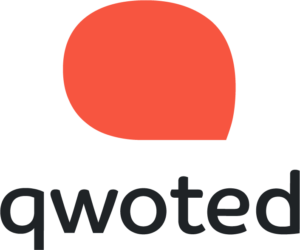Qwoted U: Five ways reporters can land super sources, PR allies

Part of a series dedicated to encouraging excellence for Qwoted users everywhere.
Picture this: You’re part of a fast-growing, first-class media outlet in a major metropolitan area. You broadcast on a number of high-exposure outlets. The financial experts you seek come off looking great and sounding just as good. There’s just one problem, though: Because you haven’t quite established your name and brand, your reporters aren’t getting the pitch love they deserve.
No theoretical scenario is this; I’ve seen it happen at Qwoted. And frankly, it doesn’t need to happen. For all the advice I’ve dispensed on how PRs can use our platform for maximum success, the reporter part of the equation deserves close scrutiny as well. I know: I served as a beta tester for Qwoted and learned a lot about how to make my pitches stand out to get exemplary results.
Truth be told, I also had a hubris thing going on. Too often I treated PR representatives as pawns to do my kingly bidding. If the sources weren’t lining up to bow at the throne and spoon feed me delicious material, it was their fault, not mine. I needed a slap in the face, or whatever hand or foot forcefully applied to a tender body part that you prefer.
Good news: I’ve since learned better. I may be Editor In Chief but still use Qwoted to elevate my stories from good to excellent. It’s taken practice, frankly. Why? Because writing a fabulous article doesn’t automatically mean you or I can write a great source pitch.
Try these five tips to raise your reporting game in the name of delivering the very best to editors, readers, sources and yes, media relations professionals. Let’s start at the start, continuing our leadoff story.
1) Don’t just pitch the story: Pitch the placement.
The lesser-known outlet I referred to above, NTD, could not bank on its name or niche financial services beat to entice sources. So we encouraged them to spotlight the opportunity. Exposure on Fios. Sky TV. YouTube. It added up to incredible chances for exposure. But PRs and sources were left in the dark because they didn’t know the brand or the logo. What’s more, those opps existed almost as an afterthought, sitting at the very bottom of source requests. Talk about burying the lede!
We suggested a simple language tweak: Put “Interview on cable TV, Fios, Sky TV…” in the title of each request. They went from crickets to crowds. Even for larger outlets, pitching the placement can improve the response rate.
2) Make it easy on the source.
Not long ago, I fell into the rut of requesting all source responses written in a Qwoted reply with rapid turnaround times of 48-72 hours. But writing thoughtful replies can take a lot more time than simply letting the source hop on the phone for 15 minutes. “Noooooo! I don’t feel like typing fast today!” I’d whine to myself. OK, fine: Why not give the source the option to use the most convenient form, then? Maybe that is writing. But what if not?
Without the written option, I would’ve never interviewed Charles Brandes, the billionaire investment legend. But without the phone, I’d have lost out on chatting with another billionaire, Lewis Cullman, creator of the leveraged buyout. More often, the colorful and authoritative replies follow when you simply jump on the line for half an hour. True, we are all pressed for time. But if an interviewee just won’t stop yapping, play offense, not defense: “I have a hard stop at 11.”
3) Give yourself flexibility to extend the pitch.
To this day, I’ve never quite landed on whether a pitch around Independence Day is best offered before or after. As a result, I always build in a cushion of several days if the pitch results don’t come in. I also examine the wording itself: Have I highlighted the placement opportunities, as in point 1? Have I allowed for the busy days of interested sources, as in point 2? Holidays are about packing suitcases, not schedules, especially this summer. If you want your Qwoted inbox packed, strategize your timing and respect bandwidth.
4) Communicate both ways: Be receptive to PRs.
I stand guilty as accused of taking the money and running once a source gives up the goods. But that’s short sighted at best when a hard-working PR and cooperative source extend themselves on your behalf. They have every right to expect you will answer their emails that ask, for example, “When do you expect this story to run? Can you find out?”
There’s every temptation to regard this as a hassle. Don’t. It reflects poorly on you and your publication. Word gets around. The good news is that this also applies when reporters extend courtesies, kindnesses and communication to the folks who have so ably helped them.
5) Build the relationship.
Thinking in terms of one deadline will only get you out of a jam created by, yup, one deadline. Qwoted was set up with the potential and intention to develop strong relationships between PRs, reporters and sources. But as with any great relationship, all parties need to show up. I’ve met wonderful PR reps through the platform: It would not have been possible otherwise. But that’s not to say it’s been a snap-your-fingers affair, either. Great relationships take work. And time.
Speaking of which, I’m always around if you want to fire questions my way. While Qwoted has grown a ton since the days where we could offer white glove service to every reporter every time, we still try our very best. We strive to make working lives easier, grow your craft and enhance your strengths in a field that has endured its share of potshots and unfounded accusations. You are not the enemy of the people. But you do have friends.
Some of them, on the PR and source side, can be found as close as your Qwoted inbox.
Lou Carlozo is Qwoted’s Editor In Chief. All opinions expressed are fully vaccinated. Email lou@qwoted.com or connect on LinkedIn.
POPULAR POSTS
LATEST ARTICLES
CATEGORIES
